
In the figure shown A & B are two charged particles having charges q and – q respectively are placed on a nonconducting fixed horizontal smooth plane. B is fixed and A is attached to a non conducting massless spring of
spring constant k. The other end of the spring is fixed. Mass of A is m, A and B are in equilibrium when the
distance between them is r. Choose the correct options
time period of small oscillation of block A about is means position =2π ⎷mk−q22π∈0r3
time period of small oscillation of block A about is means position =2π ⎷mk+q22π∈0r3
To perform SHM, K must be greater than (q22πε0r3)
to perform SHM, K must be greater than (2q2πε0r3)
Let x0= extension in the spring when A is in equilibrium then
kx0=14π∈0q2r2 .(i)
Now let A be shifted be a small distance x towards B. Then the resultant force towards A is,
Fres=k(x0+x)−q24π∈0(r−x)2=k(x0+x)−q24π∈0r2(1−x2r)−2
=k(x0+x)−q24π∈0r2(1+2xr): x<<r: binomial expansion
=kx−q22π∈0r3x, using (i)
Fres=(k−q22π∈0r3)x
∵sFαx∴SHM with T=2π
⎷mk−q22π∈0r3
For reat T, k>q22π∈0r3∴kmin=q22π∈0r3
Similar Questions
A block of mass m, lying on a smooth horizontal surface, is attached to a spring (of negligible mass) of spring constant k. The other end of the spring is fixed, as shown in the figure. The block is initally at rest in its equilibrium position. If now the block is pulled withe a constant force F, the maximum speed of the block is :
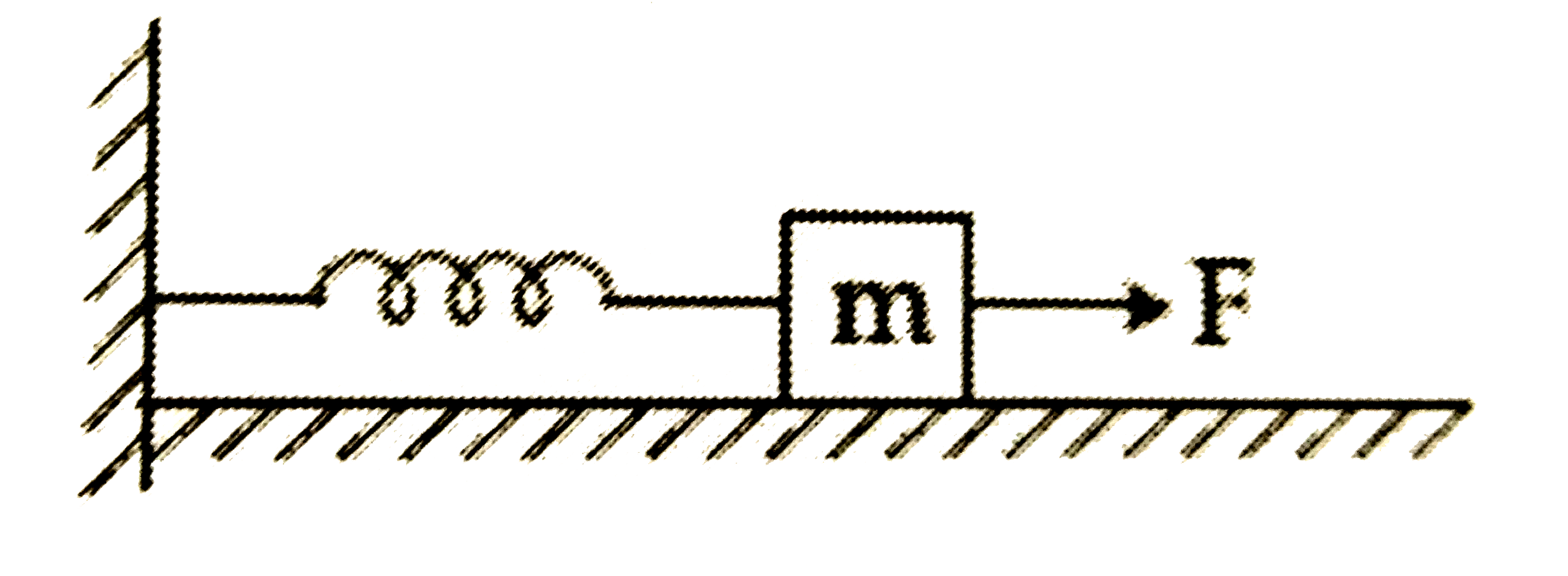
View SolutionA block of mass m, lying on a smooth horizontal surface, is attached to a spring (of negligible mass) of spring constant k. The other end of the spring is fixed, as shown in the figure. The block is initally at rest in its equilibrium position. If now the block is pulled withe a constant force F, the maximum speed of the block is :

View Solution
Knowledge Check
Two blocks of masses m1 and m2 are attached to the lower end of a light vertical spring of force constant k. The upper end of the spring is fixed. When the system is in equilibrium, the lower block (m2) drops off. The other block (m1) will
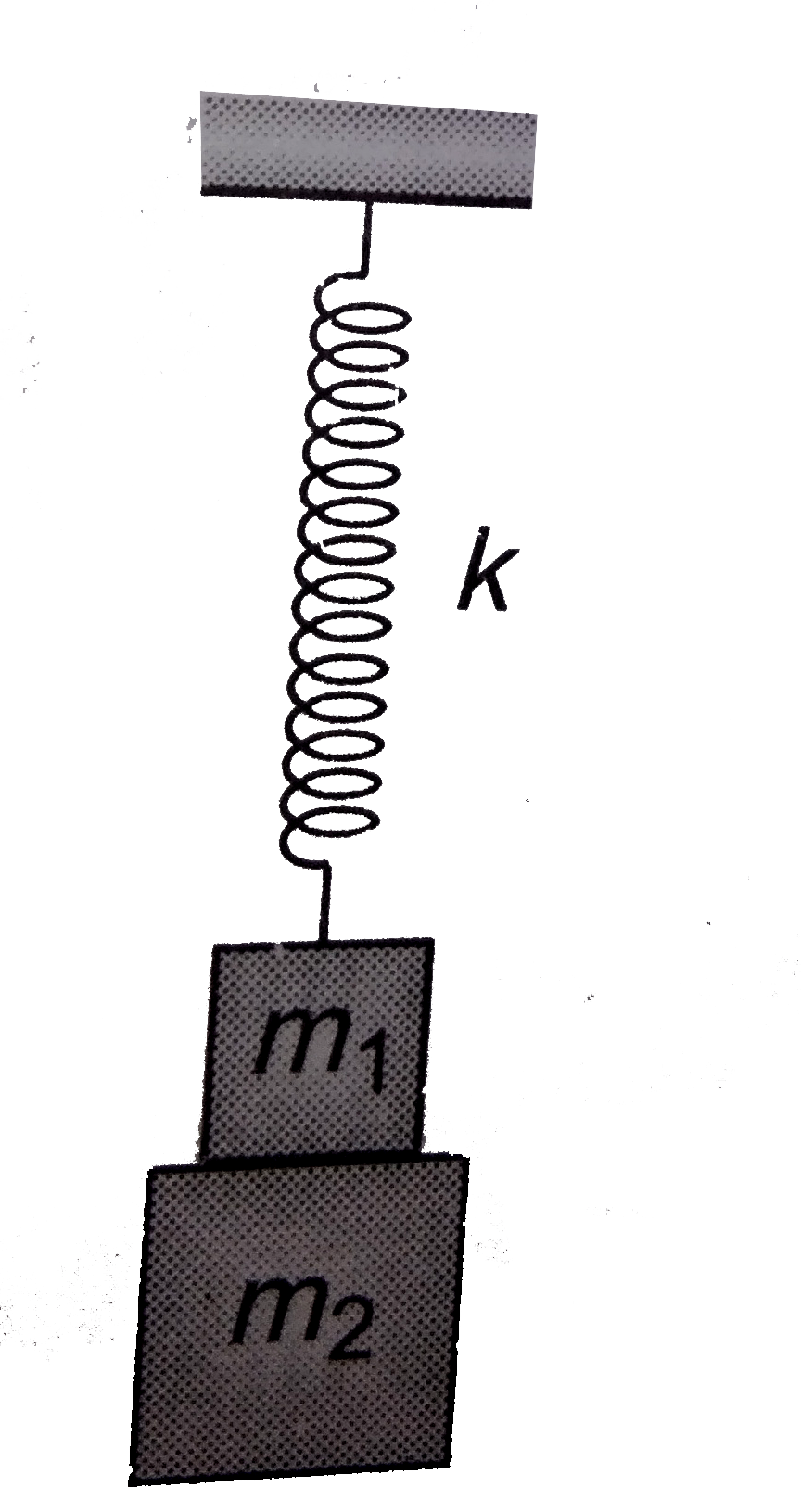 Aremain undistrubedBmove through a distance m2gk and come to restCundergo vertical SHM with a time period of 2π√m1kDundergo vertical SHM with a time period of
Aremain undistrubedBmove through a distance m2gk and come to restCundergo vertical SHM with a time period of 2π√m1kDundergo vertical SHM with a time period of
2π√m1+m2kA Bead of mass m is attached to one end of a spring of natural length 'R' and spring cosntant 'k=(√3+1)mgR'. The other end of the spring is fixed at point 'A' on a smooth vertical ring of radius 'R' as shown
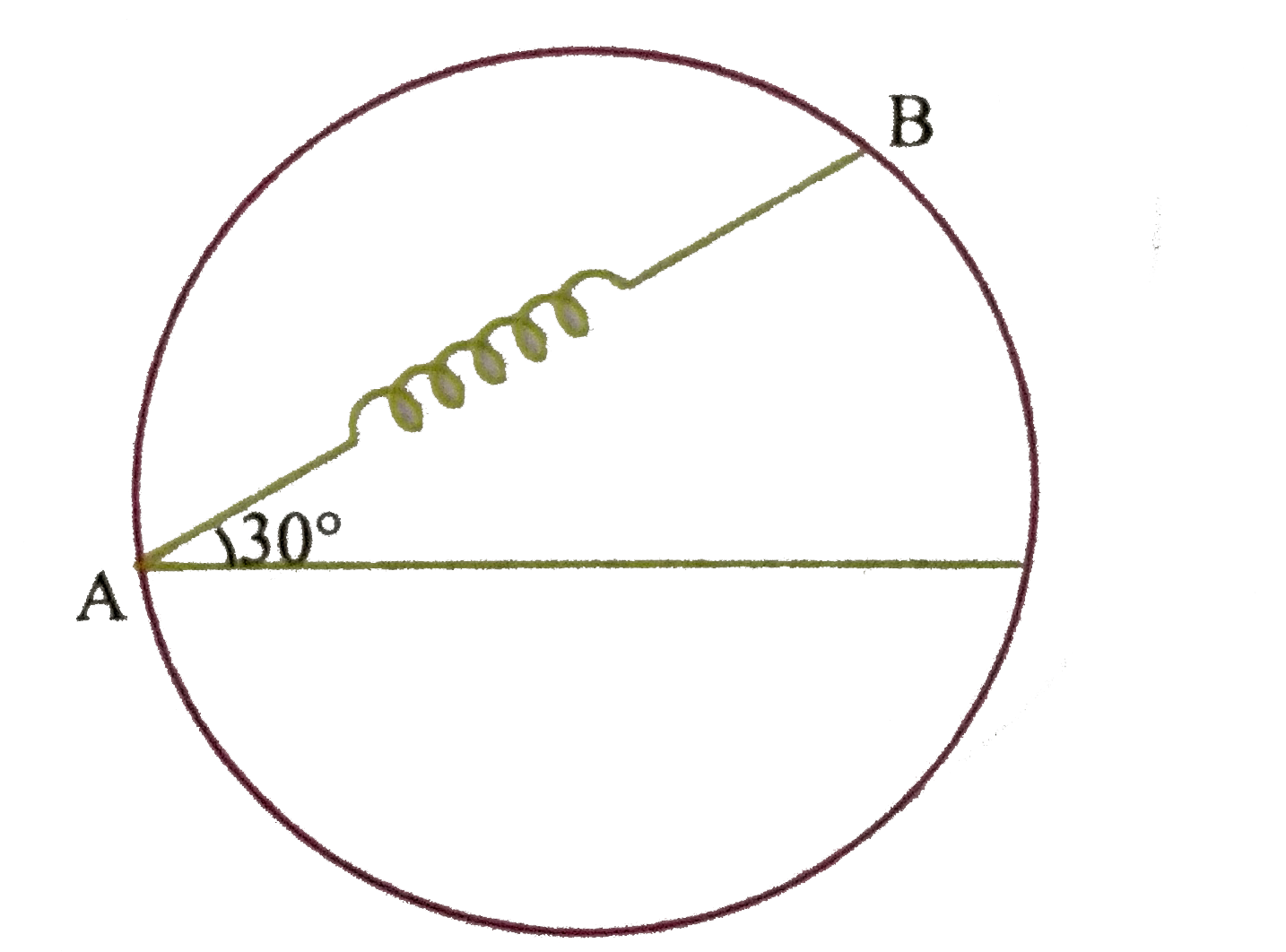 AThe normal reaction at 'B' just after the bead is released to move is:3√3mg2BThe tangential acceleration of the bead just after it is released to move is :g/2CThe normal reaction at 'B' just after the bead is released to move is :3mg2DJust after the bead is released to move the normal acceleration and Tangential acceleration are numerically equal.
AThe normal reaction at 'B' just after the bead is released to move is:3√3mg2BThe tangential acceleration of the bead just after it is released to move is :g/2CThe normal reaction at 'B' just after the bead is released to move is :3mg2DJust after the bead is released to move the normal acceleration and Tangential acceleration are numerically equal.A particle of mass m is attached to three identical massless springs of spring constant k as shown in the m 135 figure. The time period of vertical oscillation of the particle is
 A2π√mkB2π√m2kC2π√m3kDπ√mk
A2π√mkB2π√m2kC2π√m3kDπ√mk
A mass m is attached to the free end of a massless spring of spring constant k with its other end fixed to a rigid support as shown in figure. Find out the time period of the mass, if it is displaced slightly by an amount x downward.
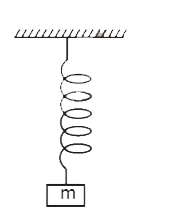
View SolutionA block of mass m having a charge q is placed on a smooth horizontal table and is connected to a wall through an unstressed spring of spring constant k as shown in figure(29.E1) . A horizontal electric field E parallel to the spring is switched on. Find the amplitude of the resulting SHM of the block.
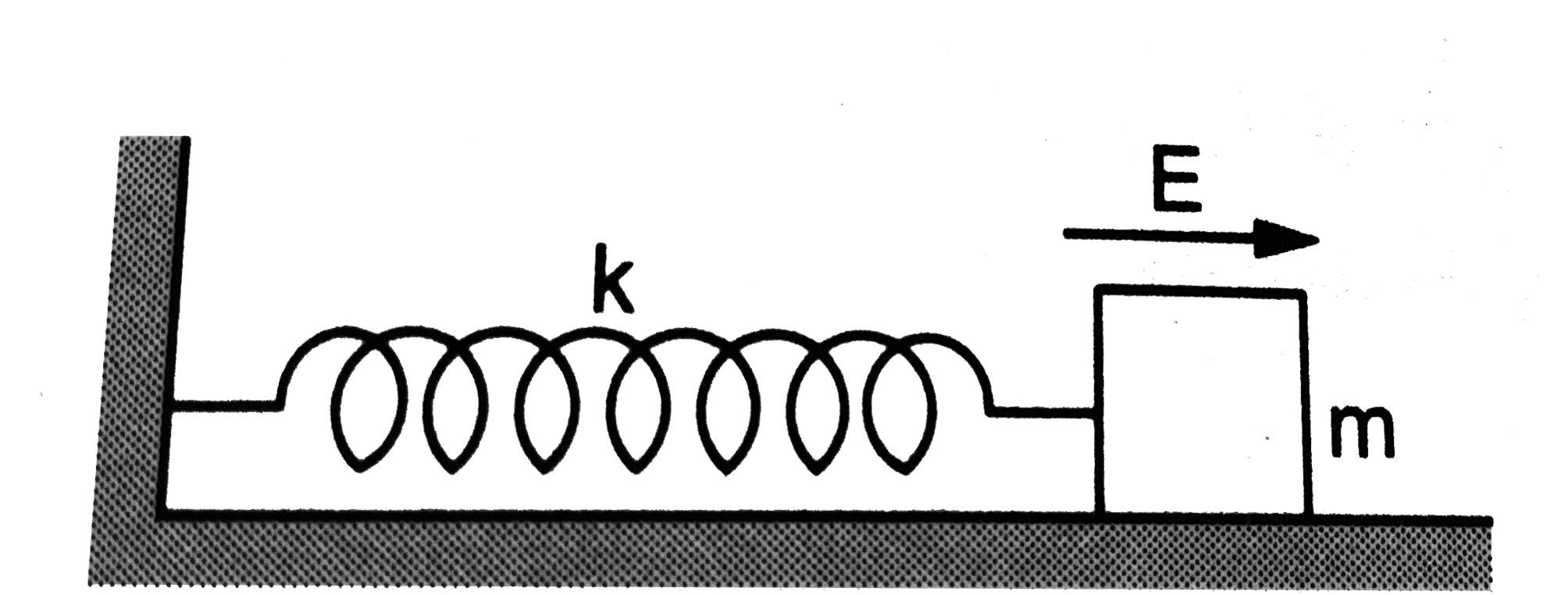
View SolutionTwo large non conducting plates having surface charge densities +σ and −σ respectively, are fixed d distnce apart. A small test charge q of mass m is attached to two non conducting springs each of spring constant k as shown in the figure. The sum of lengths of both springs in underformed state is d. The charge q is released from rest with both the springs nondeformed. then charge q will (neglect gravity)
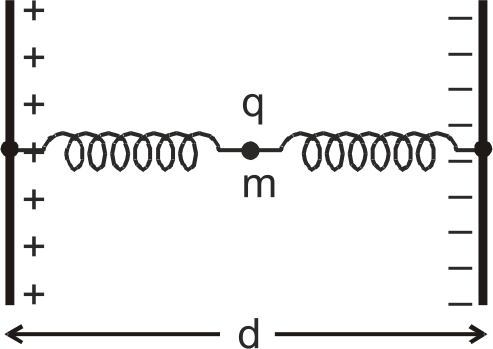
View SolutionA bead of mass 'm' is attached to one end of a spring of natural length R & spring constant k=(√3+1)R. The other end of the spring is fixed at point A on a smooth vertical ring of radius R as shown. The normal reaction at B just after it is released to move is
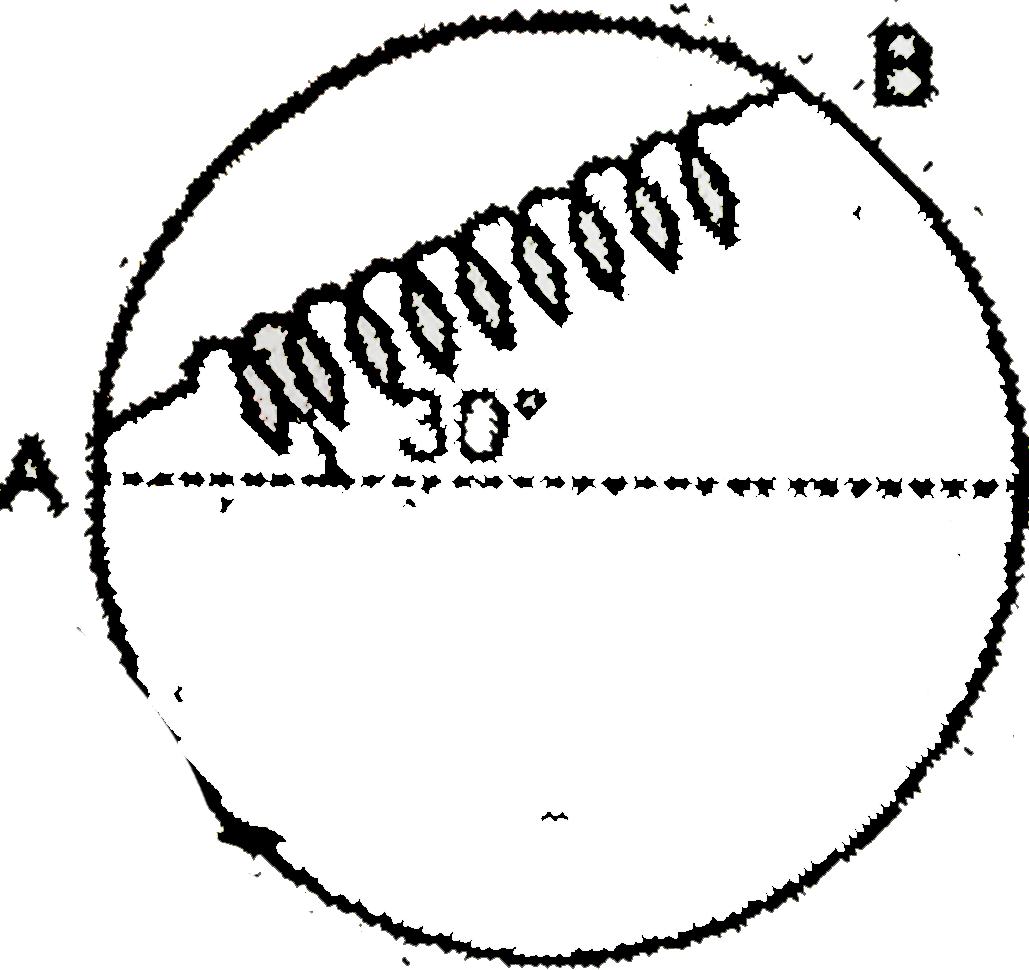
View SolutionTwo charged capacitors have their outer plates fixed and inner plates connected by a spring of force constant 'K'. The charge on each capacitor is q. find the extension in the spring at equilibrium

View Solution

